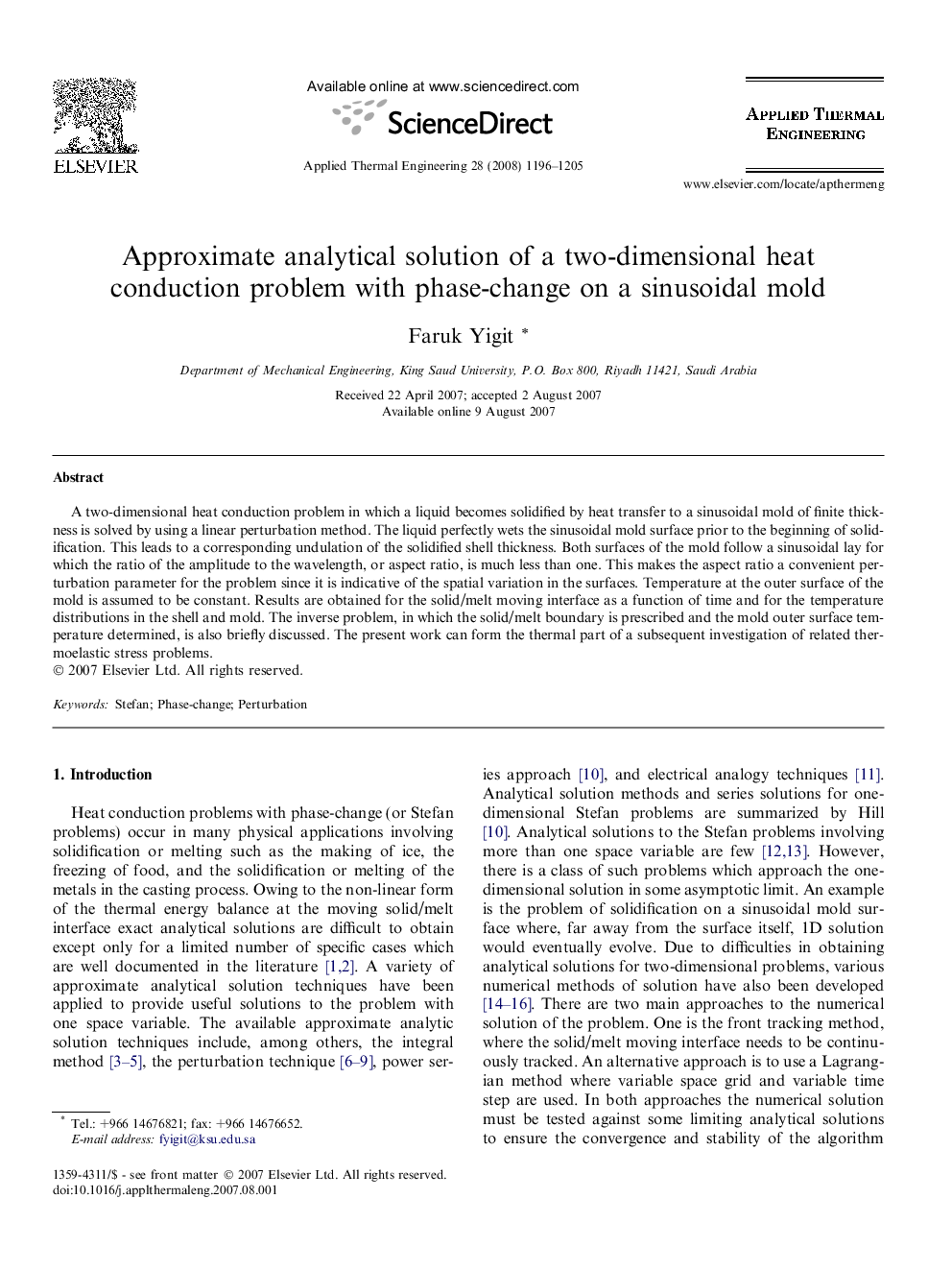| Article ID | Journal | Published Year | Pages | File Type |
|---|---|---|---|---|
| 649063 | Applied Thermal Engineering | 2008 | 10 Pages |
A two-dimensional heat conduction problem in which a liquid becomes solidified by heat transfer to a sinusoidal mold of finite thickness is solved by using a linear perturbation method. The liquid perfectly wets the sinusoidal mold surface prior to the beginning of solidification. This leads to a corresponding undulation of the solidified shell thickness. Both surfaces of the mold follow a sinusoidal lay for which the ratio of the amplitude to the wavelength, or aspect ratio, is much less than one. This makes the aspect ratio a convenient perturbation parameter for the problem since it is indicative of the spatial variation in the surfaces. Temperature at the outer surface of the mold is assumed to be constant. Results are obtained for the solid/melt moving interface as a function of time and for the temperature distributions in the shell and mold. The inverse problem, in which the solid/melt boundary is prescribed and the mold outer surface temperature determined, is also briefly discussed. The present work can form the thermal part of a subsequent investigation of related thermoelastic stress problems.
